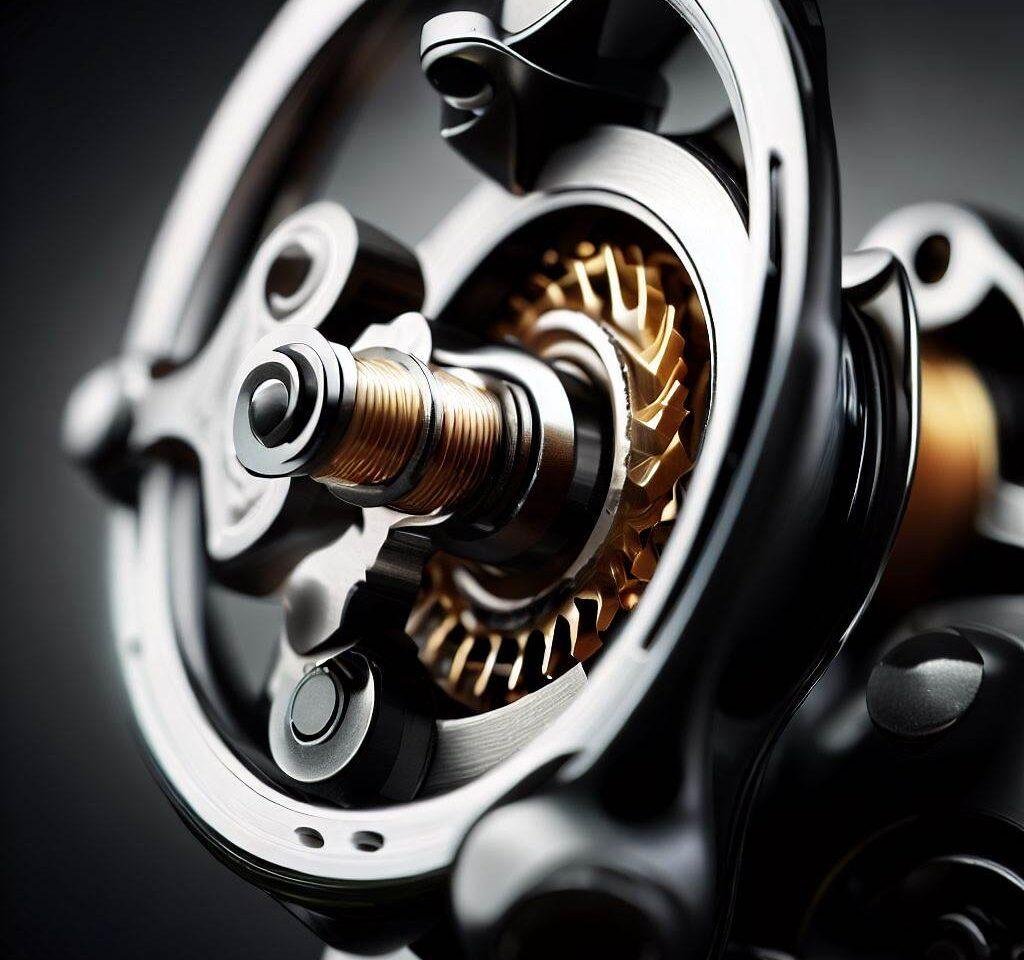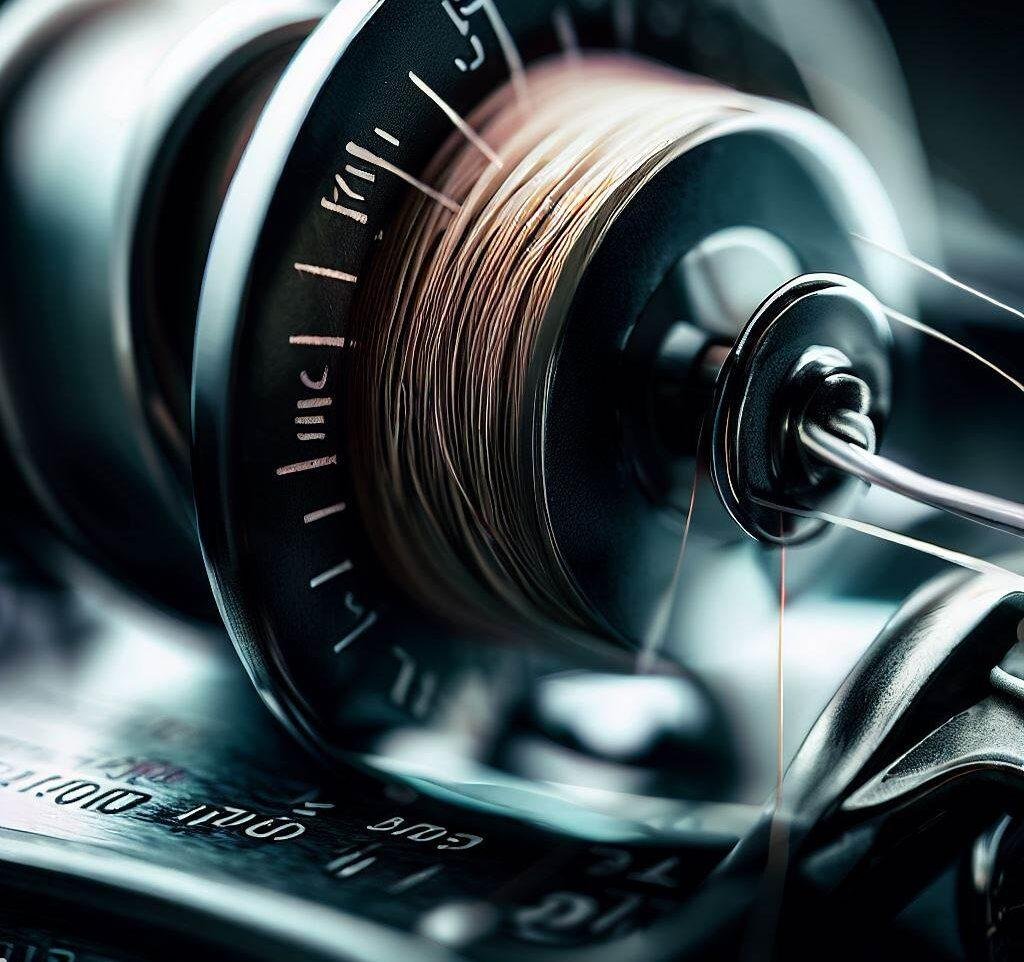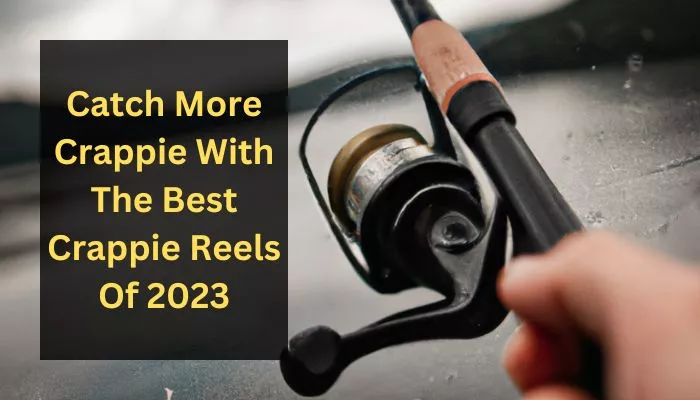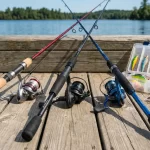Just like you need the right bait to attract big fish, selecting the best fishing reel gear ratio is necessary for your success on the water. I’ve learned that a well-chosen gear ratio can significantly impact your ability to land larger catches, making your fishing experience truly rewarding.
As I guide you through the nuances of gear ratios, you’ll discover how to tailor your setup to enhance your chances against those monstrous fish. Let’s probe how understanding this key element can set you up for a banner year of fishing!
Key Takeaways:
- Understand Gear Ratio: The gear ratio determines how fast the line is retrieved; a higher ratio allows for quicker pulls, crucial for fast-moving fish.
- Match Fishing Type: Consider your fishing style; different gear ratios are suitable for freshwater vs. saltwater fishing, as well as for specific techniques like trolling or bass fishing.
- Target Fish Size: Larger fish often require slower gear ratios for better control, while smaller species can be effectively caught using faster retrieves.
- Evaluate Water Conditions: Adjust your gear ratio based on environmental factors like water clarity and current strength to enhance your catch rate.
- Beginner Guidance: For newcomers, a moderate gear ratio is often the best starting point to balance ease of use and effectiveness.
What Does Fishing Reel Gear Ratio Mean?
The fishing reel gear ratio is a vital aspect that determines how quickly you can retrieve your line after casting. This ratio reflects the number of times the spool rotates with one complete turn of the handle.
Choosing the right gear ratio significantly impacts your success in catching specific types of fish, allowing you to tailor your approach to each fishing situation effectively.
Basic Mechanics of Gear Ratios
Among the various components of your fishing reel, gear ratios play a pivotal role in how effectively you can manage your fishing line.
The higher the gear ratio, the faster the line is retrieved, which can be beneficial for species that require quick action. Conversely, lower ratios allow for more power and torque, suitable for battling larger fish.
Common Gear Ratio Ranges
Ratios typically range from 4:1 to 8:1. A ratio of 4:1 means the spool rotates four times for every one turn of the handle, while an 8:1 ratio indicates eight rotations. Choosing a ratio within the 5:1 to 7:1 range provides a good balance for various fishing conditions.
Further understanding gear ratios is necessary for optimizing your fishing strategy. Fast ratios (7:1 and above) are ideal for catching fish that require quick retrieval, such as bass during fast-paced feeding times.
On the other hand, slower ratios (4:1 to 5:1) give you more control and strength, necessary for pulling in heavier catches. Always consider your specific fishing conditions and the type of fish you are targeting when selecting your gear ratio for the best results.
Recommended Fishing Reels
Factors to Consider When Selecting Your Gear Ratio

Any angler should take the time to evaluate several factors when selecting a gear ratio for their fishing reel. Key considerations include:
- Types of fishing (freshwater vs. saltwater)
- Size and type of fish being targeted
- Desired effect on the line during casting and retrieving
Any experienced angler knows the importance of matching these factors to ensure a successful catch. For more information, check out this guide on How to Select the Best Gear Ratio for Inshore Saltwater …
Fish Species and Size
Consider the species and size of the fish you’re targeting. Species like bass require different gear ratios than tuna. For smaller fish, a moderate ratio often suffices, while larger species may demand a faster ratio for better hook setting.
Fishing Environment
Your fishing environment plays a vital role in selecting the right gear ratio. Different locations, such as lakes or ocean waters, can affect how retrieval speed impacts your success. Each spot presents unique challenges and opportunities.
Considering factors like current strength, water clarity, and depth can further inform your decision. A fast gear ratio might be effective in a fast river, while a slow ratio could be more suitable in calmer waters. Understanding these nuances helps you bring in more fish.
Lure Types and Techniques

Behind different lure types and fishing techniques, you’ll find that gear ratios can dramatically affect your success rate. Choose a gear ratio that complements the lures you intend to use:
- Topwater baits
- Soft plastics
- Spinnerbaits
- Crankbaits
- Jigs
The right choice will enhance your effectiveness on the water.
In addition, understanding the techniques associated with each lure type helps refine your strategy. For example, using a slow gear ratio for bouncing jigs allows for a more natural presentation.
On the other hand, a fast gear ratio works well for topwater lures to create exciting action that can entice fish. The right gear ratio maximizes the effectiveness of your chosen lures.
How to Use a Fishing Reel’s Gear Ratio to Catch More Fish?

Many anglers often overlook the gear ratio when planning their fishing strategies, but a well-matched gear ratio can significantly enhance your success on the water.
By aligning your reel’s gear ratio with specific conditions and fish species, you can optimize your retrieval speed and power.
For instance, a higher gear ratio may be ideal for quickly reeling in fish in shallow waters, while a lower gear ratio can provide the torque needed for battling big fish in deeper waters. Understanding these dynamics is key to improving your catch rate.
Speed Control Techniques
Among the various techniques to control speed during your fishing trips, utilizing the gear ratio of your reel plays a pivotal role.
By adjusting the gear ratio according to the species and water conditions, you can effectively vary the speed of your bait presentation.
For instance, using a slow gear ratio allows for a more subtle approach, which can entice cautious fish, while a faster ratio can trigger reactions from aggressive species.
Power vs. Speed Applications
Any experienced angler will tell you that balancing power and speed is fundamental for effective fishing. The choice of gear ratio can dictate whether you prioritize the pulling power needed for larger fish or the speed required to quickly retrieve lines and cover more water.
A higher gear ratio allows for rapid reeling, beneficial in fast currents or when targeting active species, while a lower ratio provides the leverage for handling tougher catches, making it necessary to match the applications to the fishing context.
Ratio is a deciding factor when considering the dual principles of power and speed in fishing applications. A low gear ratio (like 4:1) offers incredible torque for fighting hard-dragging species, which is vital when you’re after larger fish.
Conversely, a high gear ratio (around 6:1 or more) allows you to retrieve line swiftly, necessary for targeting quick-moving species or when fishing in fast waters.
Choosing the right balance based on your fishing situation can markedly impact your success and help you reel in that big catch.
Pros and Cons of Different Gear Ratios
Despite the variety in fishing reel gear ratios, each option comes with its own set of advantages and disadvantages.
Understanding these can help you determine which ratio is best suited for your fishing needs. Here’s a quick overview:
| Gear Ratio | Pros and Cons |
|---|---|
| High-Speed (7.1:1 and above) | Fast retrieval, good for quick action, but can lead to fatigue. |
| Medium-Speed (6.1:1 to 7.0:1) | Balanced retrieval speed, versatile for various fishing types. |
| Low-Speed (5.1:1 to 6.0:1) | Increased torque for pulling in big fish, slower retrieval. |
| Fast (General) | Good for covering water quickly, but less sensitivity. |
| Slow (General) | Excellent for bottom fishing, but may miss action. |
| Moderate (General) | Great balance, but may not be optimal for specialized techniques. |
| Specific Ratios for Species | Targeting species can yield better results, but limits versatility. |
| Durability with High Ratios | May wear out faster under heavy use, but ideal for speed. |
| Price Variability | Higher gear ratios often come at a premium, but offer performance. |
| Maintenance Needs | More complex gearing can require more upkeep, but improve function. |
For insights on how to choose the right gear ratio based on your fishing style, check out the Best Gear Ratio For Catfish – Catfish Angler Forum at USCA.
High-Speed Ratios (7.1:1 and Above)
The high-speed gear ratios are perfect for situations requiring quick retrievals, such as topwater fishing or when targeting actively feeding fish.
However, you should be cautious as the increased retrieval speed can lead to quicker fatigue, especially after an extended fishing session.
Medium-Speed Ratios (6.1:1 to 7.0:1)
For many anglers, medium-speed gear ratios hit the sweet spot for versatility. They provide a good balance between retrieval speed and torque, making them suitable for a wide range of fishing techniques. This flexibility can make your fishing experience more enjoyable.
Even when you’re targeting different types of fish, medium-speed gear ratios allow you to adapt your fishing style without needing to constantly switch reels. They are especially effective for bass fishing, where the ability to retrieve lures at varying speeds can entice fish when they are less aggressive.
Low-Speed Ratios (5.1:1 to 6.0:1)
Beside their ability to provide more torque, low-speed ratios are often favored when targeting larger, more stubborn fish. This enhanced power makes it easier to pull in heavy catches, though you’ll have to accept a slower retrieval rate.
For instance, when fishing for species like catfish or large pike, a low-speed ratio can make a significant difference in your success rate. These reels allow you to manage your line better and maintain control, especially when engaging in more challenging fishing conditions.
Tips on Selecting the Right Gear Ratio For Beginners
Your journey towards catching big fish starts with selecting the right gear ratio. Here are some key points to consider:
- Understand the significance of gear ratio in fishing.
- Choose a ratio that fits the type of fish you are targeting.
- Think about the fishing environment, whether it’s freshwater or saltwater.
- Consider the desired speed of line retrieval.
Assume that making informed choices will greatly impact your success on the water.
Starting Points for Different Fishing Styles
On your fishing adventure, consider starting with a low to moderate gear ratio (around 5:1 to 6:1) for general fishing. For bass fishing or when pursuing fast-moving species, a higher gear ratio (7:1 or higher) will help you reel in quickly. If you’re trolling or targeting larger, slower fish, a lower gear ratio (4:1) might be more effective for maintaining control.
Common Mistakes to Avoid
At the onset of your fishing journey, many beginners make mistakes that hinder their success. A frequent error is choosing a gear ratio without considering the specific conditions and fish types. This can lead to inefficient reeling and lost opportunities.
This can particularly affect your fishing experience; for instance, selecting a gear ratio that is too high might compromise your ability to fight large fish effectively.
Another common pitfall is not matching the gear ratio to the fishing technique—using a fast gear ratio while trolling can result in poor line control.
Focus on understanding your fishing style and the environment, as proper gear selection can increase your chances of landing that big catch.
Best Gear Ratios for Popular Game Fish
Not every fishing reel gear ratio is created equal when it comes to targeting specific game fish. Understanding the unique behavior and habitat of your target species can vastly improve your success rate.
By aligning your gear ratio with the type of fish you’re after, you can enhance your performance on the water and maximize your chances of landing that big catch this year.
Bass and Pike
Along with being thrilling to catch, bass and pike often require different gear ratios due to their varying active behaviors.
A gear ratio between 6.1:1 to 8:1 is great for bass fishing, allowing for quick retrieves, while a 5.1:1 to 6.2:1 ratio is better suited for pike, especially when you’re working slower baits.
Saltwater Species
One of the exciting aspects of saltwater fishing is the diversity of species you may encounter, each demanding different gear ratios.
Whether you’re targeting tuna, marlin, or snapper, choosing the right gear ratio can impact your success significantly.
Generally, a gear ratio of 5.0:1 to 6.4:1 works well for larger game fish, allowing you to reel quickly against strong currents while providing enough strength for heavy line retrieval.
With saltwater fishing, the stakes are high. You’re often battling against powerful fish that can put significant strain on your equipment.
A gear ratio tailored for these conditions not only enhances your ability to handle rapid runs but also helps you to manage heavy tackle effectively.
If you want to increase your odds of landing substantial saltwater species, a strong, responsive gear ratio is necessary to keep your line tight and ensure you’re prepared for those intense fights!
Conclusion
So, as I gear up for the upcoming fishing season, I find that the best fishing reel gear ratio for targeting big fish really depends on your approach and the species you’re after.
If you’re aiming for fast-paced strikes from larger freshwater species, a higher gear ratio can certainly help. Conversely, when targeting bigger saltwater fish, a lower gear ratio might be beneficial for better torque and control.
Ultimately, I encourage you to consider your fishing style and the conditions to find the gear ratio that best enhances your chances of landing that trophy catch this year!


























I don’t think the title of your enticle matches the content lol. Just kidding, mainly because I had some doubts after reading the enticle. https://www.binance.com/en/register?ref=P9L9FQKY
I may need your help. I tried many ways but couldn’t solve it, but after reading your article, I think you have a way to help me. I’m looking forward for your reply. Thanks.